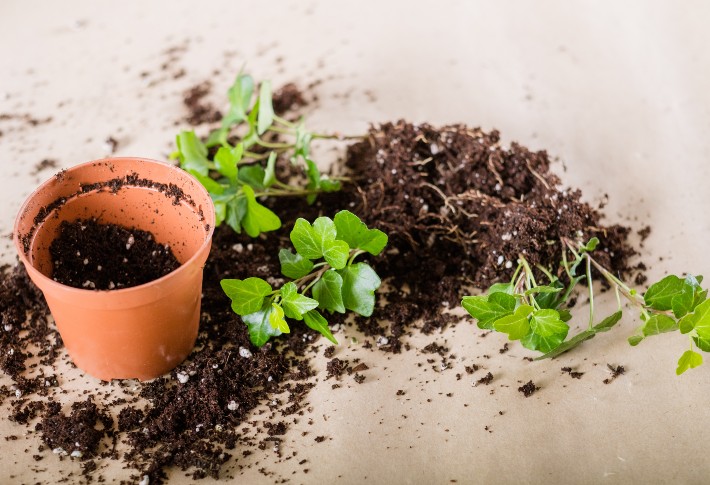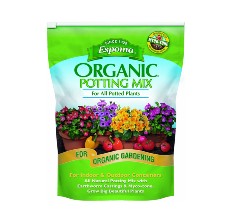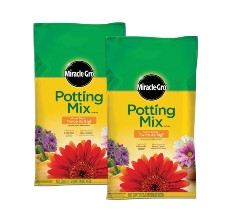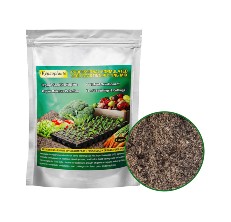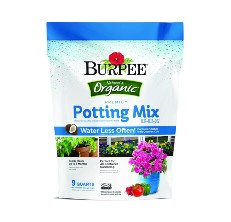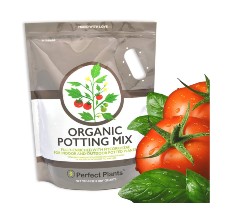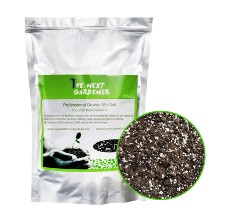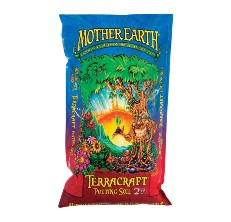- Flowers & PlantsVegetablesOur content is meticulously curated through independent research, testing, reviews, and AI-driven recommendations, all designed to present you with the finest product choices. When you make a purchase through our links, it could result in us earning a commission.
The Best Potting Mix of 2024
Last updated: Apr 8, 2024
A quality potting mix consists of all the right ingredients your potted plant needs to grow. However, since different plants require different pH ranges, water retention capacity, and porosity, choosing the right potting mix for your plant might become more of a chore than a hobby. Well, not to worry, here we have carefully selected high-quality potting mixes available in 2024. It doesn't matter whether your plant is a succulent or a fern; in this section of this article, you will find the best potting mix of 2024 for your potted plant. The Espoma AP8 Potting Mix is our top pick of the bunch, but we've also included alternative potting mixes.
Our Top Picks For Potting Mix
- Best Overall: Espoma AP8 Potting Mix Shop Now ➔
- Runner Up: Miracle-Gro Potting Mix Shop Now ➔
- Best for Succulents: Kenzoplants Potting Mix Shop Now ➔
- Easiest to Use: Burpee Premium Potting Mix Shop Now ➔
- Also Consider: PERFECT PLANTS Potting Mix Shop Now ➔
- Best Against Pests: The Next Gardener Potting Mix Shop Now ➔
- Also Consider: Mother Earth Potting Mix Shop Now ➔
View all Contents- Premium Potting Mix: A Complete Buying Guide
- What Is the Difference Between Potting Soil and a Potting Mix?
- What Are the Benefits of Potting Mix Over Potting Soil?
- What Are the Benefits of Potting Soil Over Potting Mix?
- What Are the Different Types of Potting Mix?
- What Are the Types of Fertilizers Used in the Potting Mix?
- What Are the Most Popular Potting Mix Ingredients?
- Factors To Consider When Choosing a Potting Mix
- People Also Asked
- Related Articles
The Best Potting Mix
Best Overall
The Espoma AP8 includes a combination of all the best organic ingredients your plant needs to grow and live healthily. It is suitable for all potted plants.
Pros
- 100% organic
- Contains the right proportion of organic matter
- Excellent water absorption and retention abilities
Cons
- Little pricey
Runner Up
The Miracle-Gro Potting Mix is formulated with ingredients that will make plants grow twice as fast as any other potting mix. It also brightens the color of your potted plant.
Pros
- Speeds up plant growth
- Absorbs and holds moisture well
Cons
- Might attract gnats
Key Features
- Formulated for bigger plant growth
- Contains 6-month nutrient feed
- Enhances bloom density and color
- Suitable for both indoor and outdoor plants
- Designed for use in pots and containers
- Promotes growth twice as much as unfed plants
- Ensures vibrant color compared to non-fed plants
Best for Succulents
The Kenzoplants Potting Mix is composed of 100% organically sourced ingredients that promote plant growth. This potting mix grows herbs, vegetables, and flowers.
Pros
- Perfect for succulents
- Contains high-quality ingredients
Cons
- Comes in a small and pricey bag
Easiest to Use
The Burpee Premium Potting Mix will keep your flowers looking bright and vibrant. It also grows nourishing and delicious-looking vegetables and herbs.
Pros
- Coco coir used in this potting mix is lighter than regular soil
- Effortless repotting compared to regular soil
Cons
- Zipper closure might be faulty
Also Consider
This organic potting mix from PERFECT PLANTS works well for both outdoor and indoor plants. With it, growing your herbs, vegetables, and cannabis plant should be easy.
Pros
- Works well for outdoor and indoor potted plants
- Comes in small bags that won’t take up space
Cons
- Large wood chips in the bag
Best Against Pests
This potting mix from the Next Gardener is the best organic mix for all horticultural bonsai species like succulents and cactus. It is also incredibly lightweight and has good water absorption ability.
Pros
- No pest or insect problems
- Very lightweight
Cons
- Very pungent smell
Also Consider
Hawthorne Gardening Co. calls this the Mother Earth Potting mix. It is the #1 all-purpose potting mix for flowers, vegetables, and tomatoes. It works well for indoor, outdoor, and also raised bed plants.
Pros
- Seedlings grow fast and easy
- Bag is big and well worth the price
Cons
- Not the best for seeds that need fine texture soil
Premium Potting Mix: A Complete Buying Guide
Using garden soil for your potted plants is a bad idea. They do not do well when placed inside containers. Here, whether you are an expert or an amateur, we will be leaking some guarded secrets that will help you with choosing the top-rated potting mix for seedling and replanting. At the end of this section, you will also be endowed with the ability to select high-quality potting mixes, just as we have done in the review section above.
What Is the Difference Between Potting Soil and a Potting Mix?
Although these two potting mediums have the similarity of helping the plant grow and are used interchangeably in other articles, they are not the same. So here we would be looking at the differences and advantages of one over the other.
Potting mix
A potting mix is a soilless garden medium made specifically for container gardening. This soilless media comprises many living organisms that provide potted plants with the sterile environment they need to grow. They are usually lightweight, have large particles, and are composed of slow-release or continuous-release fertilizers.
A potting mix will also include inorganic and organic matter like sphagnum peat moss, earthworm castings, sphagnum moss, compostable organic matter like pine bark and coir, perlite, and vermiculite. All of these ingredients help improve the aeration, water-holding, and water retention capacity of your container plants.
Potting soil
On the other hand, potting soil is a gardening medium made from regular garden soil. This media, unlike the potting mix, isn’t sterile as it may contain pathogens. They are also heavy and don’t contain fertilizers; instead, they contain compost.
What Are the Benefits of Potting Mix Over Potting Soil?
- Potting mixes have better aeration, better water absorption, and water retention capacities.
- Their texture and fluffiness make it easy for roots to penetrate them.
- This type of potting media contains the right mix of nutrients.
- Unlike potting soils, they are less prone to waterlogging, making them perfect for container gardening and outdoor potted plants.
What Are the Benefits of Potting Soil Over Potting Mix?
- Unlike potting mixes, potting soils last longer and do not break down.
- They are also cheaper than potting mixes.
What Are the Different Types of Potting Mix?
Many house plants and outdoor potted plants will perform well with an all-purpose potting mix. However, some need a potting mix with ingredients explicitly tailored to their need. This special potting mix can imitate the natural habitats of these plants. Here are the different types of potting mixes.
All-purpose potting mix
The all-purpose potting mix works well for indoor and outdoor potted plants. In addition, they are also suitable for growing flowers, edibles, herbs, and other houseplants.
Indoor potting mix
This type of potting mix makes growing indoor houseplants easy. When choosing a potting mix for your indoor plant, check the label to ensure it doesn’t contain compost or bark, as these attract gnats into your home.
Raised beds potting mix
Raised beds potting mixes are manufacturer specified for growing outdoor plants such as vegetables and other feeder plants. This potting mix will ensure your outdoor plants get the proper amount of nutrients.
Seed starting potting mix
This mix has a light and porous profile, which encourages healthy and robust root formation. It is fine-textured to allow better contact between the soil and the seed. Additionally, it is made sterile to ensure your plant grows to be healthy and free of diseases.
Orchid potting mix
Orchid potting mix is formulated especially for orchids. The mix is coarse, and it contains mainly bark chips, charcoal, and perlite, needed to create large air pockets that promote easy drainage.
African violet potting mix
This potting mix contains dolomitic lime, a pH adjuster that allows it to attain the slightly acidic pH range of 6.0-6.5 of the natural environment of the African Violet.
Cactus and succulent potting mix
Cactus and succulents require soils that drain water quickly since they are low water plants. Therefore, they contain perlite that aids in drainage and may also include pH adjusters that keep the mix in the slightly alkaline PH range of 7.3.
For more information about the different types of potting mix, watch this video from Gary Pilarchik:
What Are the Types of Fertilizers Used in the Potting Mix?
Fertilizers used by potting mix manufacturers are of two types:
- Slow-release fertilizers
- Starter charge fertilizers
Slow-release fertilizer
Slow-release fertilizers are manufacturers’ embedded fertilizers used when transferring a plant from one container into another. After planting, they do not remain in the potting mix for more than one month, so you will also need to add your fertilizer to the soil.
Also, they have the disadvantage of causing burns on flowers and plants when they sit in the bag for too long. This is due to the presence of nitrogen in the fertilizer.
Starter charge fertilizer
Starter charge fertilizers are useful for helping seeds germinate. The fertilizer present in the mix is very little and will only remain in the potting mix for the first three times you water the seed. You will also need to add your fertilizer to the mix.
What Are the Most Popular Potting Mix Ingredients?
Here we will be discussing the origin and function of some of the most popular potting mix ingredients.
Peat moss
This ingredient is from the peat bogs of the United States and Canada. They ensure that the potting mix has a high water retention capacity and provides it with good air spacing, which will help the roots grow well. They are perfect for growing plants that need an acidic medium to survive.
Pine bark
This ingredient is usually combined with peat moss to provide excellent moisture and water retention ability to the potting mix. However, by itself, it will not be able to support plant growth. To enjoy its benefits, potting mix manufacturers combine it with peat moss. Once added to peat moss, the pine bark works to extend the life of the potting mix.
Perlite and vermiculite
Perlite and vermiculite are two ingredients of volcanic origin; they help to provide air space in the mix. Vermiculite is particularly important as it can hold moisture and fertilizer for an extended period. It also ensures that nutrients are attached to the plant’s roots instead of moving down to the bottom of the container.
Factors To Consider When Choosing a Potting Mix
Here are factors and features to look out for when choosing a potting mix for your plant.
Moisture and nutrient retention ability
If you want to confirm the ability of a potting mix to retain moisture and nutrients, take a look at the ingredients in the mix. A typical indicator of good water and nutrient retention is when a high percentage of peat moss is in the potting mix. So the higher the rate of peat moss, the higher the moisture and nutrient and moisture retention ability of the potting mix.
Nutrient variation
The best potting mix contains a handful of essential nutrients in the right proportion that will meet your plant’s needs. So, when choosing a potting mix, select the ones that will provide your plant with a wide variety of nutrients.
Aeration and drainage
The best potting mix will allow air to flow to the roots of the plant easily. The potting mix needs to be fluffy; it should not compact easily and should be lightweight. The soil should also allow for good drainage of water. Lastly, the potting mix should be porous enough so that air and oxygen can get to the plant’s roots.
Density and structure
One way to confirm if the density of the potting mix is the right one for your plant is by adding water. Stay away from any potting mix that gets dense when wet. Also, if the structure of the potting mix will also be consistent throughout the potting mix, it is an indication that the potting mix is good, and the roots will be able to attach themselves firmly.
People Also Asked
Which is better, potting soil or potting mix?
Although potting soil and potting mix have their strengths and weaknesses, the potting mix is the better option because it is sterile and contains no pathogens.
When should I replace potting mix?
If a potting mix is unused, you should try replacing it after six months. However, for a potting mix still in use, replacement should be done within 12 to 18 months.
How do you know if a potting soil is bad?
Here are some indicators that your potting mix has gone wrong; these are signs that the peat moss in the potting mix is decomposed. Unpleasant smell coming from the potting mix When insects continuously swarm the potting mix When the potting mix is dense
Article Contributors
Read More About Garden Gate Review Team HereThe Garden Gate Review Team’s product reviews and in-depth guides are here to help you choose the best products for a beautiful and bountiful garden and backyard. The content is created by The Garden Gate Review Team. Garden Gate’s editorial staff is not involved. Garden Gate is reader-supported: When you buy through links on our site, we may earn an affiliate commission. The Garden Gate Review Team is composed of authors, editors, and gardeners. Artificial Intelligence (large language models) may have been used in the research and creation of the content.
Please reach out to aimperiapt@gmail.com with any questions regarding product testing or specific articles.
